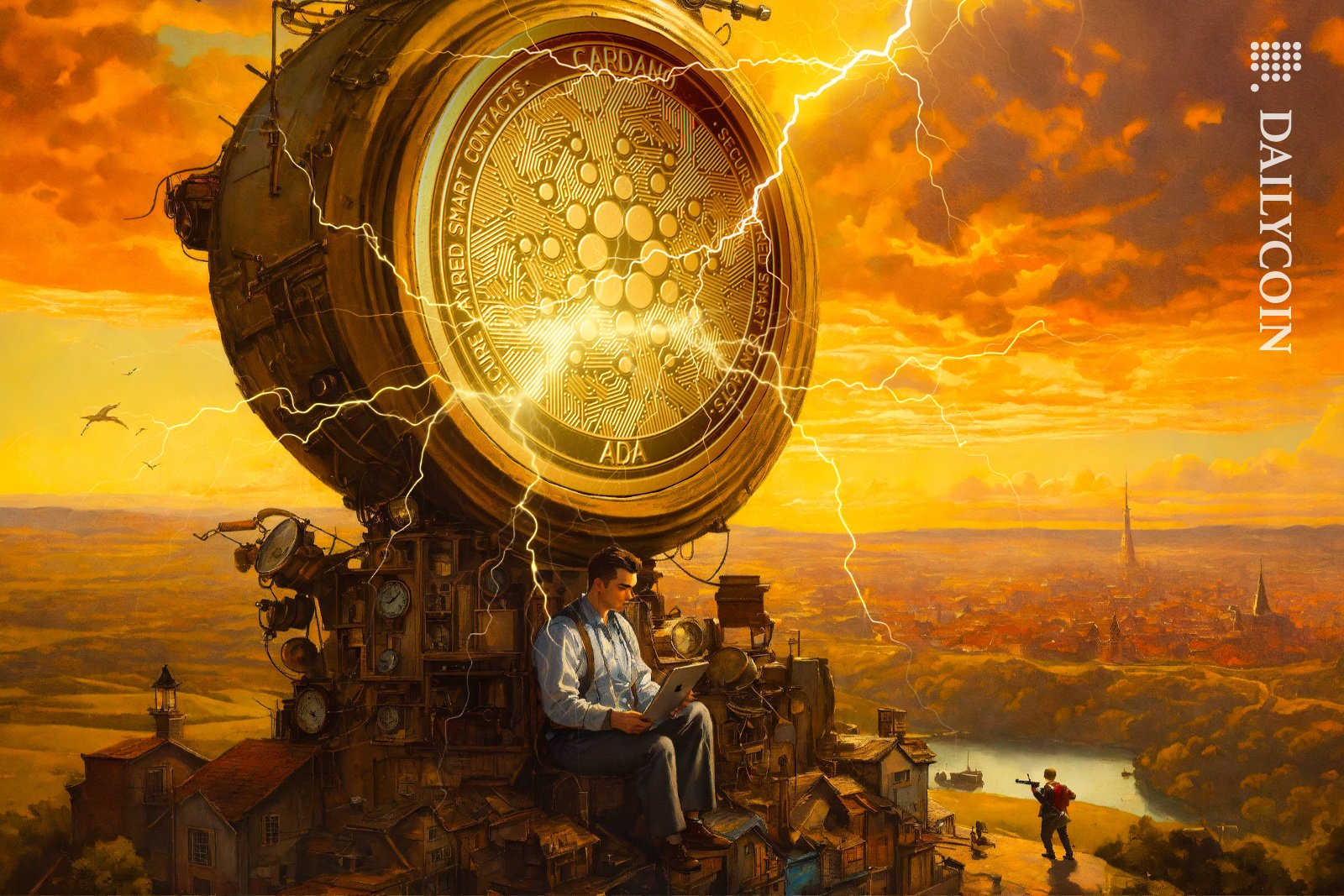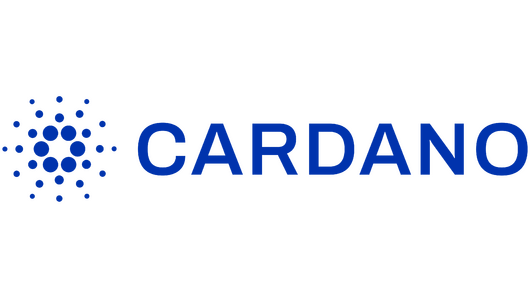
Cardano’s history is one of the blockchain industry’s emotional rollercoasters. Like many of its peers in the crypto market, Charles Hoskinson’s blockchain has seen its fair share of euphoric highs and despairing lows.
Beyond price action, Cardano’s history explores some of crypto’s boldest and most fascinating technology. Known for its meticulous, research-driven approach to blockchain development, the Cardano network has achieved several significant milestones in its lifetime.
Let’s recap what makes Cardano unique and dig into the archives to uncover some of the biggest moments in Cardano’s history.
Table of Contents
What Is Cardano (ADA)?

Cardano is a third-generation layer one blockchain. Cardano is a fully decentralized proof-of-stake network supporting smart contract development, created by Charles Hoskinson, an original Ethereum (ETH) co-founder.
Sponsored
This is a rather common list of features at this stage of the blockchain industry’s lifespan. There are dozens, if not hundreds, of individual blockchains, all promising to be faster and more efficient than their rivals.
What makes Cardano any different?
Why Is Cardano Special?
The Cardano network is the first blockchain built from the ground up through academic theory. This research-driven approach has arguably led to Cardano’s industry-leading decentralization and security.
Sponsored
While other networks have suffered blockchain hacks and outages, Cardano has maintained perfect uptime since the network first launched.
On top of that, Cardano also boasts impressive scalability. Transactions on the network are finalized quickly, with gas fees typically costing users less than one cent per transfer.
Finally, Cardano has attracted a thriving developer community. The network features dozens of dApps and products in various sectors, including DeFi, NFTs, and asset tokenization. Cardano’s blockchain has proven to be such a great environment for builders that Santiment, a popular analytics platform, named it the #1 network for developers in 2023.
Cardano History: Timeline of Key Events
Now that we’ve refreshed your memory let’s review some of the significant milestones that have encrypted themselves into Cardano’s history.
Inception
It may come as a surprise to crypto newcomers, but Cardano’s history begins with Ethereum. When Vitalik Buterin, Ethereum’s leading co-founder, first wrote the Ethereum whitepaper in 2013, it attracted some of the brightest minds in cryptography and computer science.
Among those early blockchain big brains was Charles Hoskinson himself. Alongside a team of other founders, including Gavin Wood, the original Ethereum team began working on the world’s first smart contract-capable blockchain.
However, in 2014, differences between key team members caused tensions, which eventually boiled over and caused a rift in the Ethereum team. As a result, Hoskinson and Ethereum’s then-COO, Jeremy Wood, left the Ethereum team to pursue their own crypto project.
Genesis
From 2015 to 2017, Charles Hoskinson and Jeremy Wood worked diligently to assemble a team to create the most complete blockchain the industry had ever seen.
Following a research-first, academic approach to blockchain development and architecture, Hoskinson and the team at Input Output Global designed a Proof-of-Stake network from the ground up that promised to to solve all of Ethereum’s pain points.
On September 23, 2017, the first-ever block was minted on the Cardano blockchain. After years of development, the network was finally live.
Shelley Era and the Mary Hard Fork
Despite the palpable excitement, the Cardano blockchain wasn’t particularly useful initially. Yes, it featured a novel consensus mechanism named Ouroboros, which was far more sustainable and energy-efficient than the Proof-of-Work models favored by Bitcoin (BTC) and Ethereum. Still, there wasn’t much that users could do apart from sending and receiving ADA tokens between wallets.
That all changed in the Shelley Era. During this time, crypto staking was made possible on the Cardano network, with users delegating their ADA tokens to staking pools that worked to secure and decentralize the network.
Another key milestone of the Shelley Era, the Mary hard fork, planted the first seeds of DeFi functionality on the network. The update went live on March 1st, 2021, and allowed developers to create native tokens within the Cardano ecosystem.
This meant new tokens and NFTs could finally be created and deployed on the Cardano blockchain, a necessary step that greatly expanded Cardano’s potential.
Goguen Era and the Alonzo Hard Fork
While ADA fans consider Cardano’s rigorous research standards one of the network’s perks, it has meant that development progress can be sluggish. Cardano has often trailed behind rival Layer One’s, leading to criticism and slurs, with detractors labeling it the ‘Ghost Chain.’
The Goguen Era and its key development, the Alonzo Hard Fork, aimed to silence the critics once and for all. The Alonzo update, launched in September 2021, marked a key turning point in Cardano history, as it permitted the development of smart contracts on the network.
Effectively, the Alonzo hard fork kickstarted a flourish of activity on the network, with innovative DeFi protocols and creative NFT collections cropping up across the Cardano blockchain.
Hydra: Scaling Cardano
By this stage, the Cardano network had come a long way from its humble beginnings. The blockchain finally supported smart contracts and hosted a thriving ecosystem and passionate community.
However, Cardano still had its flaws. Despite market-leading decentralization and low fees, the network struggled to scale and couldn’t compete with faster, modern layer ones with higher transaction throughput.
Fortunately, Charles Hoskinson and the Cardano development team had a solution. Hydra, Cardano’s layer 2 scaling solution, launched in May 2023 to bring higher transaction throughput and scalability to the network.
Looking Ahead: Cardano’s Future
In just a few years, Cardano has evolved from a twinkle in Charles Hoskinson to a fully-fledged powerhouse in the blockchain industry. Since its launch, Cardano has remained one of the highest-ranked digital currencies in the crypto market, in no small part due to its impressive underlying technology and passionate community.
For Cardano, the next step is to decentralize the network further throughout the Voltaire era. During this time, the Cardano community will take greater responsibility for the protocol’s governance and work collectively towards making the network the best it can be.
On the Flipside
- Despite its progress, other modern blockchains still outperform the Cardano network in several metrics.
Why This Matters
Cardano is one of the blockchain industry’s largest and most popular cryptocurrencies. All ADA holders and supporters should educate themselves about the key events that shaped Cardano’s history.
FAQs
The Cardano blockchain launched on September 23, 2017.
ADA price reached its all-time high of $3.10 on September 2, 2021.
You can purchase Cardano (ADA) on leading crypto exchanges like Binance and Coinbase.
